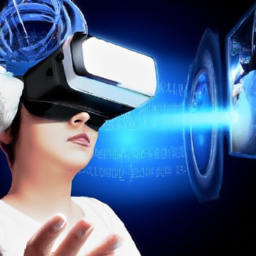The Role of AR and VR in Immersive Marketing
In today’s rapidly evolving digital landscape, companies are constantly looking for innovative ways to capture the attention of consumers and create memorable marketing experiences. Two technologies that have been making waves in the marketing world are Augmented Reality (AR) and Virtual Reality (VR). These technologies have the unique ability to immerse users in a virtual world or enhance their real-world experiences, igniting new opportunities for brands to engage with their audience on a deeper level.
What is Augmented Reality (AR)?
AR is a technology that overlays digital information onto the physical world, creating an enhanced experience for users. It superimposes computer-generated images, sounds, or videos onto the user’s view of the real world, typically seen through a smartphone or tablet screen or specialized AR glasses.
What is Virtual Reality (VR)?
VR, on the other hand, is a technology that completely immerses users in a simulated environment, shutting out the physical world. It usually requires wearing a VR headset that tracks the user’s head movements to create a fully interactive and believable virtual experience.
The Power of Immersive Marketing
In a world where traditional advertisements often fail to captivate audiences, immersive marketing experiences enabled by AR and VR have risen to prominence. These technologies transport users into unique, interactive, and engaging narratives that leave a lasting impact. By providing a more immersive and memorable experience, brands can enhance their storytelling capabilities and forge stronger connections with their target audience.
1. Product Visualization
AR and VR allow customers to visualize products before making a purchase. For example, using an AR app, customers can virtually try on clothing from the comfort of their homes or see how furniture would look in their living rooms. By bridging the gap between the online and physical shopping experience, AR and VR provide customers with an enhanced understanding of products, minimizing purchase uncertainty, and increasing the likelihood of conversion.
2. Interactive Experiences
Immersive technologies offer brands the opportunity to create interactive experiences that go beyond passive consumption. Whether it’s a VR game, an AR treasure hunt, or a 360-degree virtual tour, brands can engage users in unique and memorable ways. Such experiences boost customer engagement, foster brand loyalty, and encourage social sharing, amplifying the reach of the marketing campaign.
3. Storytelling and Emotional Connection
AR and VR provide marketers with powerful tools to tell compelling stories and elicit emotional responses. By placing users at the center of the narrative and allowing them to interact with the virtual environment, brands can create empathy, generate excitement, or invoke curiosity. These emotional connections foster a stronger bond between the consumer and the brand, leading to increased brand recognition and customer loyalty.
4. Enhanced Event Experiences
AR and VR can transform brand activations and events into unforgettable experiences. By incorporating immersive technologies into live events, brands can provide attendees with unique and engaging interactions. For example, attendees can use AR glasses to see interactive virtual displays or participate in VR simulations tied to the event theme. These experiences leave a lasting impression on attendees, boosting brand visibility, and creating a buzz around the event.
The Future of Immersive Marketing
As technology continues to advance, the possibilities for immersive marketing experiences are only expanding. With the increasing accessibility of AR and VR headsets and the constant evolution of software, brands of all sizes can harness the power of immersive technologies to captivate audiences and stand out in a crowded marketplace.
In conclusion, the role of AR and VR in immersive marketing is undeniable. These technologies offer brands the ability to transport users into new realms, interact with products and services in innovative ways, and create emotional connections through storytelling. By incorporating AR and VR into their marketing strategies, companies can captivate audiences, forge stronger relationships with customers, and ultimately drive business growth.


